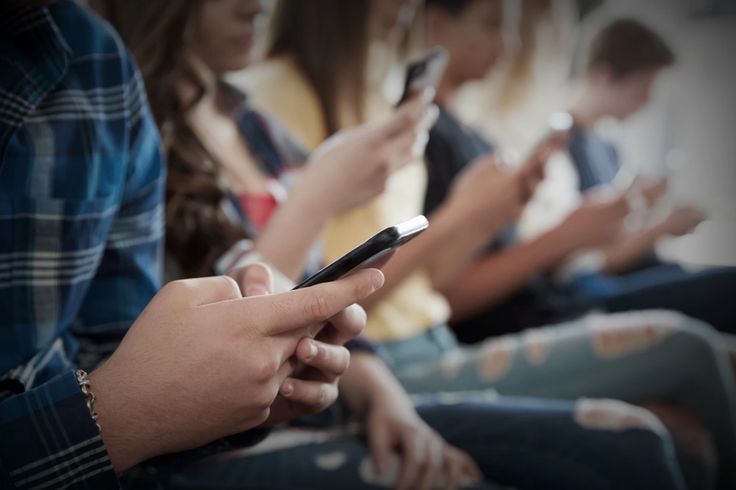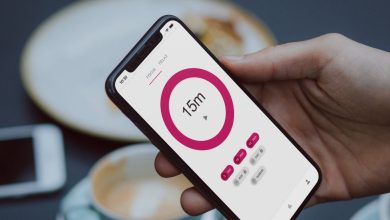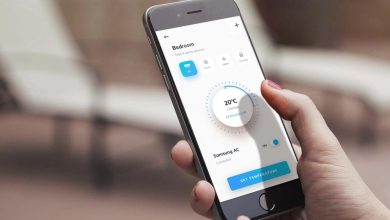Silence Digital Distractions Now

In the hyper-connected tapestry of modern life, our digital devices have become both indispensable tools and relentless adversaries. From the moment we wake to the moment we sleep, we are tethered to a constant stream of information, notifications, and social stimuli. While this accessibility offers unparalleled convenience and connectivity, it has simultaneously spawned a pervasive crisis of attention. The ceaseless pings, vibrates, and pop-ups from emails, social media, messaging apps, and news alerts fragment our focus, deplete our cognitive reserves, and ultimately sabotage our capacity for deep, meaningful work and thoughtful engagement.
The insidious nature of these digital distractions is that they are meticulously designed to capture and hold our attention, leveraging sophisticated psychological triggers to keep us scrolling, clicking, and checking. This continuous state of reactivity not only diminishes our productivity and the quality of our output but also contributes significantly to elevated stress levels, decision fatigue, and a pervasive feeling of being overwhelmed and perpetually behind. The ability to truly concentrate, to immerse oneself fully in a task or conversation, has become a rare and valuable superpower in an increasingly noisy world.
This comprehensive guide will delve deep into the pervasive problem of digital distractions, exploring their psychological grip, detailing a wide array of actionable strategies for effectively silencing them, and offering practical advice for cultivating a more intentional and focused digital life. By the end of this article, you will be equipped with the insights and tools to systematically reduce the digital noise, reclaim your attention, and unlock profound levels of concentration, thereby enhancing your productivity, mental well-being, and overall quality of life.
The Digital Addiction

To effectively silence digital distractions, we must first understand the powerful psychological mechanisms that make them so addictive and hard to resist.
A. The Dopamine Loop and Variable Rewards
Digital notifications and new content trigger a release of dopamine, a neurotransmitter associated with pleasure and reward. Critically, these rewards are often “variable”—we don’t know when the next interesting message or like will arrive, making us check compulsively, similar to gambling.
B. Fear of Missing Out (FOMO)
The constant stream of social media updates and news alerts creates an anxiety that if we disconnect, we might miss out on important information, social interactions, or breaking news, compelling us to stay perpetually connected.
C. Social Validation and Peer Pressure
Likes, comments, and shares on social media provide instant social validation, tapping into our fundamental human need for acceptance and belonging. The desire for this validation drives continuous engagement.
D. Context Switching Costs
Each digital interruption forces our brain to switch context. Even a brief glance at a notification costs us significant time and mental energy to regain our original focus, leading to inefficiency and exhaustion.
E. Perceived Urgency
Many notifications are designed to create a false sense of urgency, making us believe that every ping requires immediate attention, even when it rarely does.
Strategic Pillars for Silencing Digital Distractions
Effectively combating digital distractions requires a multi-pronged approach that addresses technology, environment, and personal habits.
A. Systematic Notification Management: The First Line of Defense
This is the most immediate and impactful step you can take to reclaim your attention.
- A. Default to “Off”: Assume all new app notifications are off until you consciously decide they are absolutely necessary.
- B. Ruthless Pruning: Go into the settings of your phone, computer, and other devices. Turn off all non-essential notifications. For apps you use frequently (e.g., messaging apps), consider limiting notifications to “silent” or “banner only,” eliminating sound and vibration.
- C. Utilize “Do Not Disturb” / “Focus Modes”: Schedule these modes for your deep work blocks, meetings, and personal time. Allow only truly critical contacts (e.g., family emergencies) to break through.
- D. Disable Badges/Red Dots: These visual cues are powerful attention-grabbers. Turn off the little red numbers on app icons that signal unread messages.
B. Proactive Digital Environment Control: Building Your Focus Fortress
Design your digital workspace to minimize temptations.
- A. Website and App Blockers: Install browser extensions or standalone applications (e.g., Freedom, Cold Turkey, StayFocusd, Forest) that block access to distracting websites (social media, news, entertainment) and apps during designated work periods. Utilize their “locked mode” if available.
- B. Minimalist Device Setup:
- Homescreen Declutter: Remove all distracting apps from your phone’s homescreen, burying them in folders or off to secondary pages. Keep only essential tools visible.
- Grayscale Mode: Experiment with setting your phone to grayscale mode. Removing vibrant colors can make your device less appealing and reduce compulsive checking.
- C. Close Unnecessary Tabs and Applications: When working on a specific task, close all other browser tabs and applications not directly relevant to that task. Each open item is a potential distraction.
- D. Internet Disconnection (Radical Focus): For truly intensive deep work, consider disconnecting your device from the internet entirely if your task doesn’t require online access. This is the ultimate digital quiet.
C. Strategic Self-Management: Cultivating Disciplined Digital Habits
Your personal habits are as crucial as your tech settings.
- A. Time-Blocking for Deep Work: Schedule large, uninterrupted blocks of time in your calendar specifically for focused, deep work. During these times, commit to zero digital distractions.
- B. Communication Batching: Instead of checking emails and messages constantly, designate specific times (e.g., 2-3 times a day) to process communications. Close these apps outside of those windows.
- C. Designated “Distraction Time”: Schedule specific, guilt-free blocks of time for checking social media, browsing news, or engaging in other digital leisure activities. This satisfies the urge without letting it bleed into productive time.
- D. The “Phone Away” Rule: Physically remove your phone from your immediate workspace during deep work. Put it in a drawer, another room, or out of sight. Out of sight, out of mind.
- E. Utilize Productivity Methods: Combine distraction-silencing with techniques like the Pomodoro Technique (focused 25-minute intervals) to train your brain for sustained concentration.
Implementing Your Digital Silence Strategy

Transforming your relationship with digital distractions requires a systematic, iterative process.
A. Conduct a Digital Audit
For a few days, meticulously track how you spend your digital time. Which apps and websites are your biggest time sinks? When do you get most distracted? This awareness is the first step.
B. Start with Notification Overhaul (Step 1 of the Pillars)
This is often the easiest and most impactful initial change. Go through all your devices and aggressively prune notifications as described above.
C. Choose One Device to Master First
If the idea of silencing everything is overwhelming, pick your biggest source of distraction (e.g., your smartphone) and apply all relevant strategies to it. Once mastered, move to your computer or tablet.
D. Implement One Blocking Tool or Habit
Choose a website blocker or commit to the “phone away” rule for your first deep work session. Don’t try to do everything at once. Build one habit, then add another.
E. Schedule “Digital Freedom” Breaks
Crucially, don’t eliminate digital leisure entirely. Schedule specific times for it. Knowing you have dedicated time for social media or news can make it easier to resist during work hours.
F. Communicate Your Intentions
If you work in a team or live with others, communicate when you are in “focus mode” and will be less responsive to digital pings. A simple “I’m doing deep work until 11 AM” can set expectations.
G. Reflect and Adjust Regularly
After a week or two, assess your progress. What strategies worked best? What was still a challenge? Are new distractions emerging? Continuously refine your approach. The digital landscape changes, so your strategy should too.
H. Embrace Physical World Engagement
Balance your digital life with analogue activities. Spend time in nature, read physical books, engage in face-to-face conversations. These activities recharge your mental focus.
The Profound Impact of Silencing Digital Distractions
The benefits of reclaiming your attention from digital noise extend far beyond mere productivity gains.
A. Enhanced Productivity and Output Quality
By eliminating interruptions, you can engage in deeper, more sustained concentration, leading to higher quality work completed in less time.
B. Improved Cognitive Function
Reducing digital noise helps rebuild your attention span, improves memory, and fosters stronger critical thinking and problem-solving abilities.
C. Reduced Stress and Anxiety
The constant pressure to respond and the fear of missing out are significant sources of stress. Silencing distractions creates a calmer, more controlled mental environment.
D. Greater Sense of Control and Agency
Taking deliberate control over your digital environment empowers you, replacing feelings of overwhelm with a renewed sense of mastery over your time and attention.
E. Deeper Engagement and Connection
Whether with your work, a book, or another person, silencing distractions allows for richer, more meaningful engagement, leading to more profound learning and stronger relationships.
F. Increased Creativity and Innovation
Our brains need periods of quiet and boredom to wander and connect disparate ideas. Reducing digital noise provides this essential mental space for creative breakthroughs.
Conclusion
In a world relentlessly vying for your attention, the ability to Silence Digital Distractions Now is not just a productivity hack; it is an act of liberation. It represents a conscious, empowering choice to reclaim your most precious, finite resource—your focus—from the incessant demands of the digital age. This is a fundamental shift from a state of passive reactivity to one of intentional engagement, allowing you to move beyond merely coping with the digital deluge to actively shaping an environment where deep work, genuine connection, and profound well-being can truly flourish.
By understanding the intricate psychological mechanisms that underpin digital addiction, and by strategically implementing a multi-pronged approach that tackles notification overload, fosters proactive digital environment control, and cultivates disciplined self-management, you construct an impenetrable fortress around your valuable attention. The aggressive pruning of notifications, the strategic deployment of blocking tools, the intentional structuring of your digital presence, and the cultivation of mindful digital habits collectively transform your relationship with technology, making it a powerful servant rather than a demanding master.
The benefits of this profound transformation resonate throughout every facet of your life: a dramatic surge in productivity and output quality, a noticeable improvement in cognitive function and attention span, a significant reduction in stress and anxiety, and a revitalized sense of control over your days. Ultimately, by mastering the art of silencing digital distractions, you are not simply optimizing your workflow; you are reclaiming your mental space, fostering deeper connections, and creating the essential conditions for a more focused, fulfilling, and intentionally lived life. It is an investment in your present effectiveness and your long-term cognitive health.



